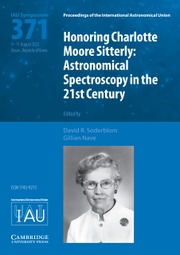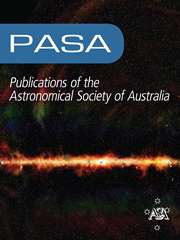Dynamics of Galaxies
2nd Edition
£45.99
- Author: Giuseppe Bertin, Università degli Studi di Milano
- Date Published: June 2014
- availability: Available
- format: Hardback
- isbn: 9781107000544
£
45.99
Hardback
-
Our understanding of galaxies, the building blocks of the Universe has advanced significantly in recent years. New observations from ground- and space-based telescopes, the discovery of dark matter, and new insights into its distribution have been instrumental in this. This textbook provides graduate students with a modern introduction to the gravitationally determined structure and evolution of galaxies. Readers will also benefit from detailed discussions of the issues involved in the process of modeling complex stellar systems. Additionally, the text provides an accessible framework for interpreting observations and devising new observational tests. Based on the author's extensive teaching experience, this second edition features an up-to-date view of basic phenomenology, a discussion of the structure of dark halos in galaxies, the dynamics of quasi-relaxed stellar systems and globular clusters, galaxies and gravitational lensing and an introduction to self-gravitating accretion disks. Extended problem sets are available from the accompanying resources website: www.cambridge.org/9781107000544.
Read more- Will appeal to graduate students and scientists from a range of backgrounds, who are curious to learn about interesting unresolved research problems posed by gravity in the study of galaxies
- Readers will find a lively discussion of hot research topics in a semi-empirical context and a critical assessment of the issues involved in the art of modeling complex macroscopic systems
- Uses an analytical approach which will guide readers through realistic investigations of the relevant physical mechanisms and the possibility of physically interesting observational tests
Reviews & endorsements
Review of the first edition: 'A fresh and exciting introduction to modern galactic physics on the grand scale, and of its connections to other broad domains of contemporary physics. Graduate students in particular, will appreciate the clarity of presentation.' Bruno Coppi, Massachusetts Institute of Technology
See more reviewsReview of the first edition: '… fills a major need for a graduate-level, physically based introduction to galaxies, and it will be of very wide appeal as a course text. The original approach leads to a rich physical intuition of real kinematical systems. A particular strength is the detailed analysis of the limitations of current methods and theories.' Gerry Gilmore, University of Cambridge
Review of the first edition: '[This] book is particularly useful for students interested in mathematical methods of galactic dynamics. Bertin's comparisons between galactic dynamics and plasma physics are also innovative and illustrative … Many of his descriptions are particularly good for beginning graduate students: his chapter on dispersive waves, for example. Each chapter includes thought-provoking questions.' Debra Elmegreen and Bruce C. Elmegreen, Physics Today
Review of the first edition: 'Bertin takes an Olympian view of this complex field and describes it with remarkable clarity and depth.' Tjeerd S. van Albada, Groningen University
Review of the first edition: 'This book is a joy to read. It connects the internal dynamics of galaxies to the physics of plasmas and the theory of wave in fluids with a delight in the universality of the laws of mechanics … An endearing characteristic is its lack of dogmatism, both in the theory of spiral structure and over dark matter … [For graduates] who want a single book for their own learning it is highly recommended. It gives an excellent introduction to the properties and internal dynamics of galaxies that allows the subject to provide its own evidence on their nature and constitution unencumbered by the philosophical baggage of cosmology.' Donald Lynden-Bell, The Observatory
'This is a superb, advanced, and up-to-date volume on all types and aspects of galaxies covering the expanding range of modern observations, the analytical theory of self-gravitating collisionless systems, and N-body simulations. It will be valuable as the basic text in a graduate-level course on galaxies and as a reference text for astronomers doing research on galaxies. For course use, the text is accompanied by extended problem sets developed by Professor Bertin over many years of graduate teaching and research on galaxies. I am very impressed.' Richard Lovelace, Cornell University
'This book provides a rich introduction to the dynamics of galaxies at the graduate level, progressing from basic observations, concepts and techniques, to active areas of research. Enough mathematics is presented to empower the reader, but the emphasis is on imparting a physical understanding of underlying principles and research frontiers. New chapters in the second edition on gravitational lensing and self-gravitating accretion disks provide a welcome exposure to these active research areas and connect to the fundamentals of previous chapters. The book distinguishes itself by making explicit the conceptual links between classical gravitational dynamics, plasma physics, and fluid dynamics. This, in turn, results in a particularly attractive text for a robust graduate astrophysics course curriculum. Researchers, instructors and students will all appreciate the comprehensive reference lists for each chapter and the plethora of practice problems.' Eric G. Blackman, University of Rochester
'This book presents a good introduction to many advanced topics in the area of galactic structure and evolution usually not covered in more introductory texts. The approach is original, particularly by presenting many interesting parallels and analogies with other areas of physics. To sum up: a very useful book for studying this subject at graduate level.' Ilian Iliev, University of Sussex
Customer reviews
Not yet reviewed
Be the first to review
Review was not posted due to profanity
×Product details
- Edition: 2nd Edition
- Date Published: June 2014
- format: Hardback
- isbn: 9781107000544
- length: 484 pages
- dimensions: 261 x 182 x 27 mm
- weight: 1.2kg
- contains: 183 b/w illus.
- availability: Available
Table of Contents
Preface to the first edition
Preface to the second edition
Acknowledgments
Part I. Basic Phenomenology:
1. Scales
2. Observational windows
3. Classifications
4. Photometry, kinematics and dark matter
5. Basic questions, semi-empirical approach and the dynamical window
Part II. Physical Models:
6. Self-gravity and relation to plasma physics
7. Relaxation times, absence of thermodynamical equilibrium
8. Models
9. Equilibrium and stability: symmetry
10. Classical ellipsoids
11. Introduction to dispersive waves
12. Jeans instability
Part III. Spiral Galaxies:
13. Orbits
14. The basic state: vertical and horizontal equilibrium of the disk
15. Density waves
16. Roles of gas
17. Global spiral modes
18. Spiral structure in galaxies
19. Bending waves
20. Dark matter in spiral galaxies
Part IV. Elliptical Galaxies:
21. Orbits
22. Stellar dynamical models
23. Stability
24. Dark matter in elliptical galaxies
Part V. In Perspective:
25. Selected aspects of formation and evolution
26. Galaxies and gravitational lensing
27. Self-gravitating accretion disks
Bibliography
Index.-
General Resources
Find resources associated with this title
Type Name Unlocked * Format Size Showing of
This title is supported by one or more locked resources. Access to locked resources is granted exclusively by Cambridge University Press to lecturers whose faculty status has been verified. To gain access to locked resources, lecturers should sign in to or register for a Cambridge user account.
Please use locked resources responsibly and exercise your professional discretion when choosing how you share these materials with your students. Other lecturers may wish to use locked resources for assessment purposes and their usefulness is undermined when the source files (for example, solution manuals or test banks) are shared online or via social networks.
Supplementary resources are subject to copyright. Lecturers are permitted to view, print or download these resources for use in their teaching, but may not change them or use them for commercial gain.
If you are having problems accessing these resources please contact [email protected].
Sorry, this resource is locked
Please register or sign in to request access. If you are having problems accessing these resources please email [email protected]
Register Sign in» Proceed
You are now leaving the Cambridge University Press website. Your eBook purchase and download will be completed by our partner www.ebooks.com. Please see the permission section of the www.ebooks.com catalogue page for details of the print & copy limits on our eBooks.
Continue ×Are you sure you want to delete your account?
This cannot be undone.
Thank you for your feedback which will help us improve our service.
If you requested a response, we will make sure to get back to you shortly.
×






